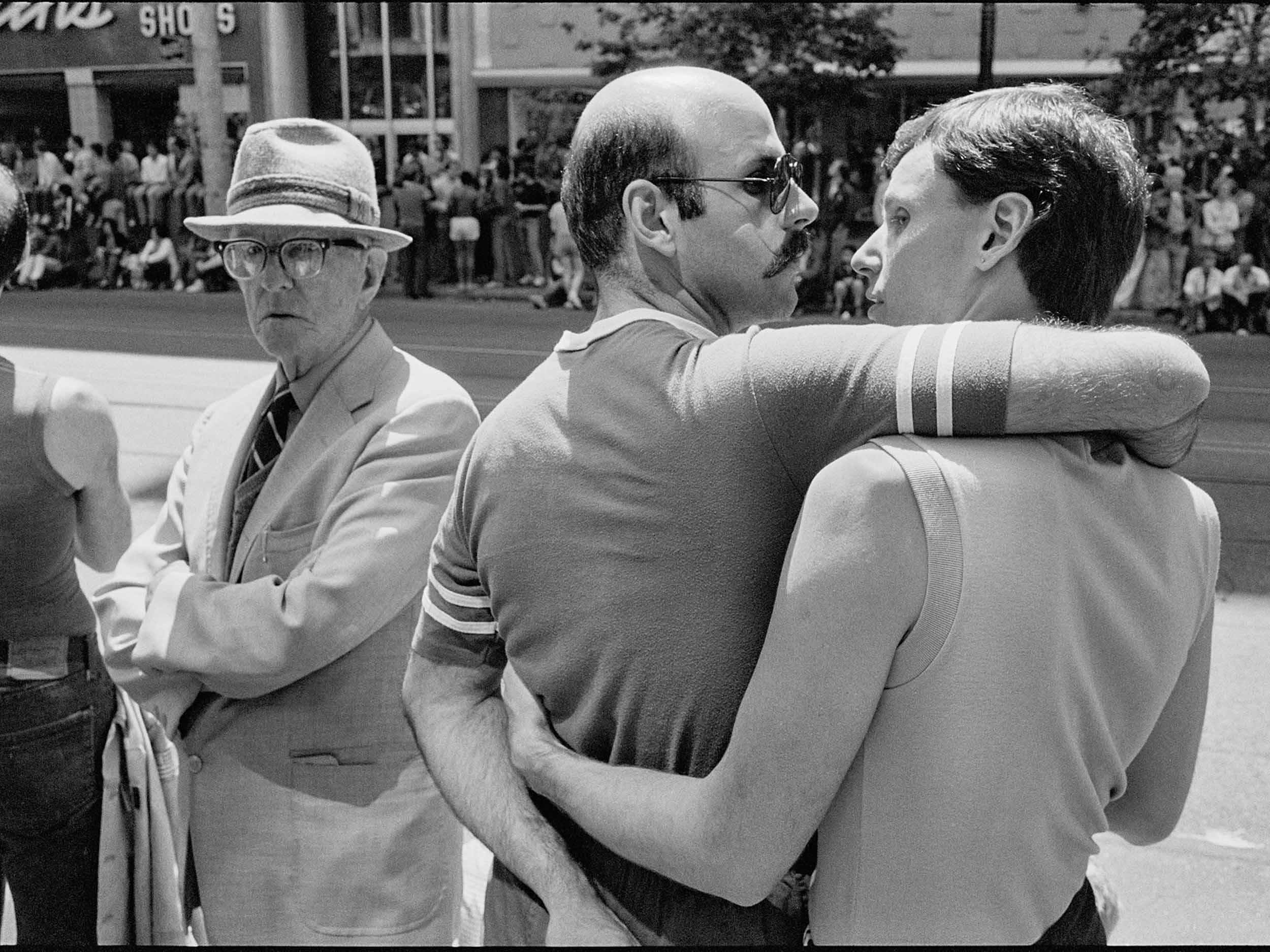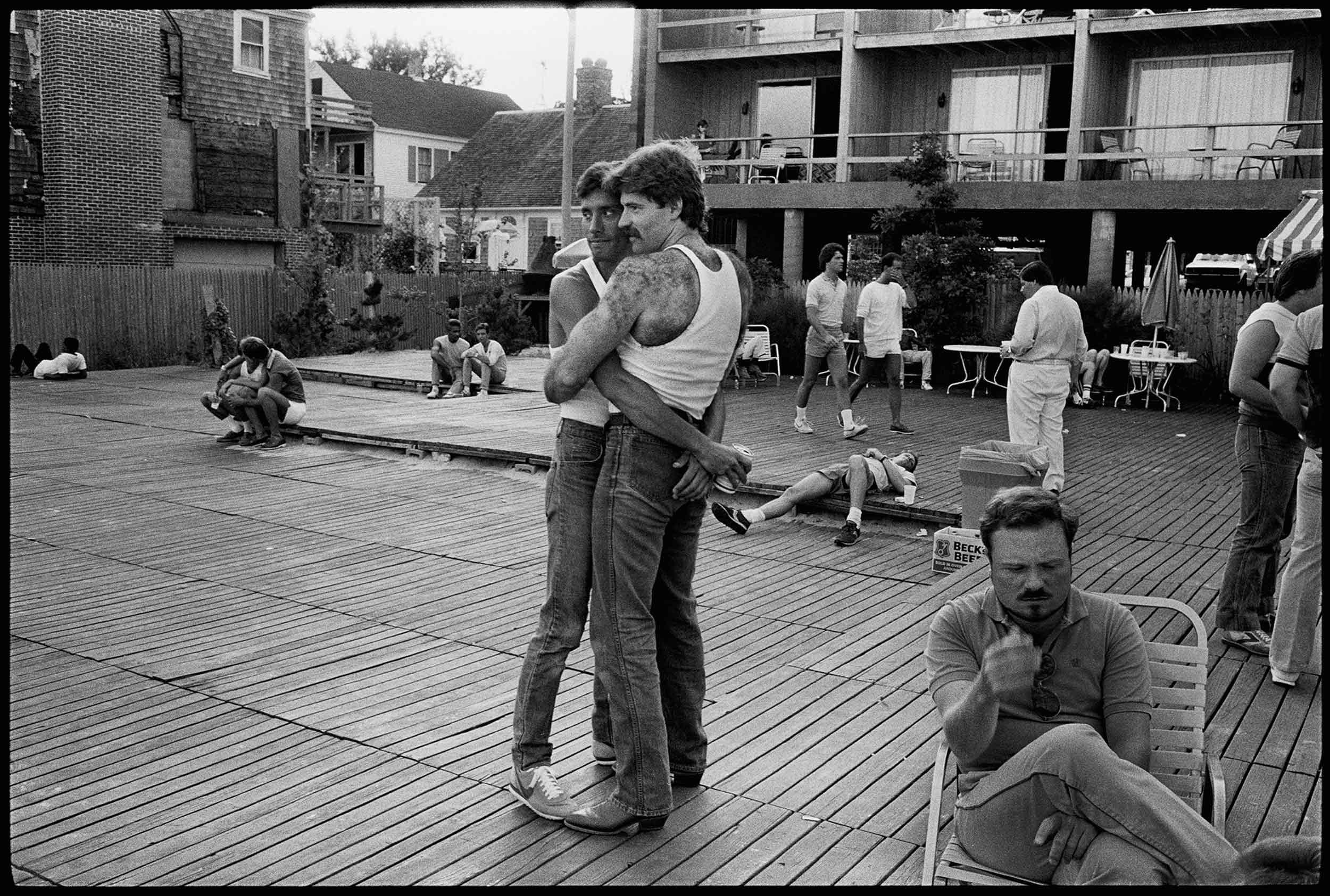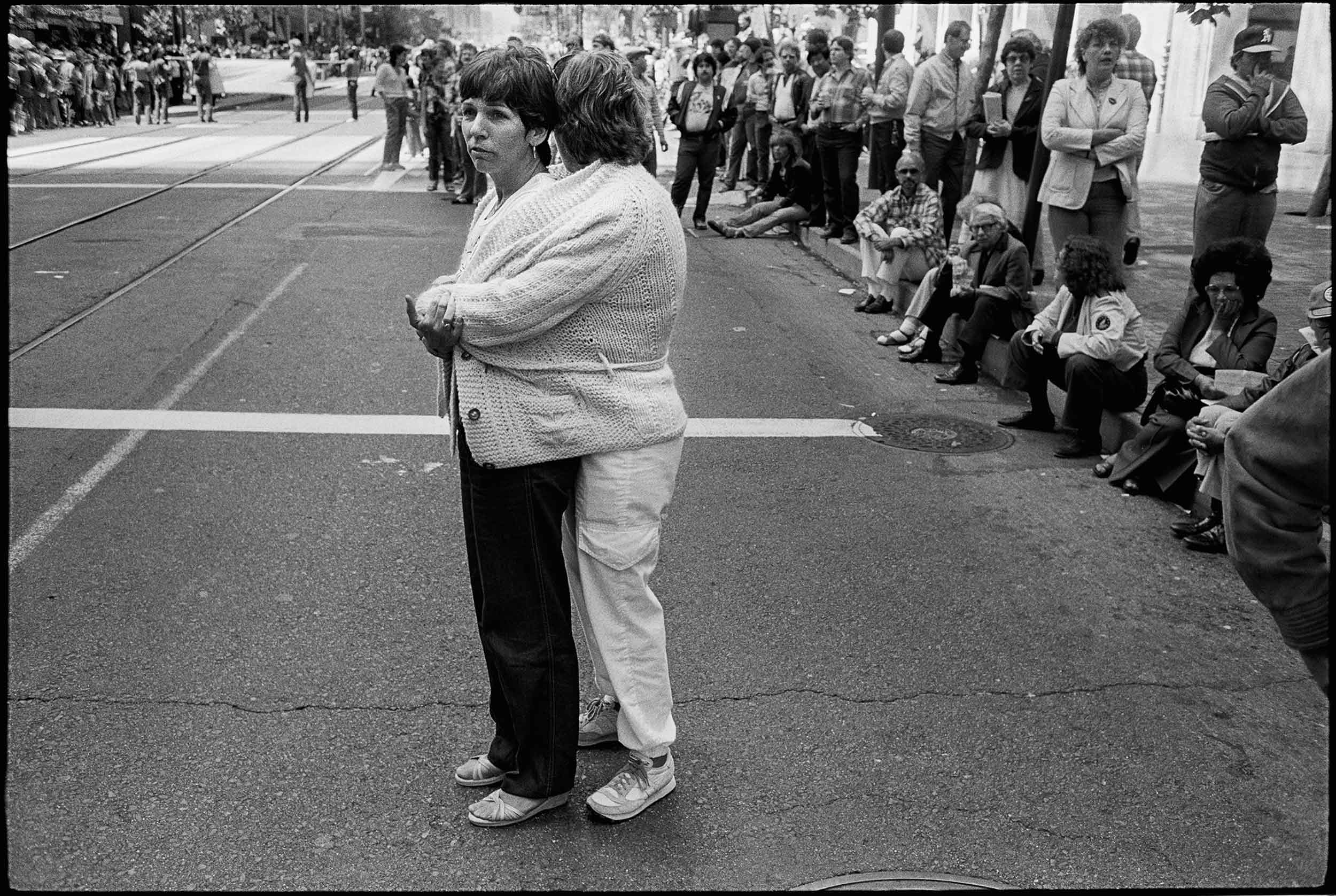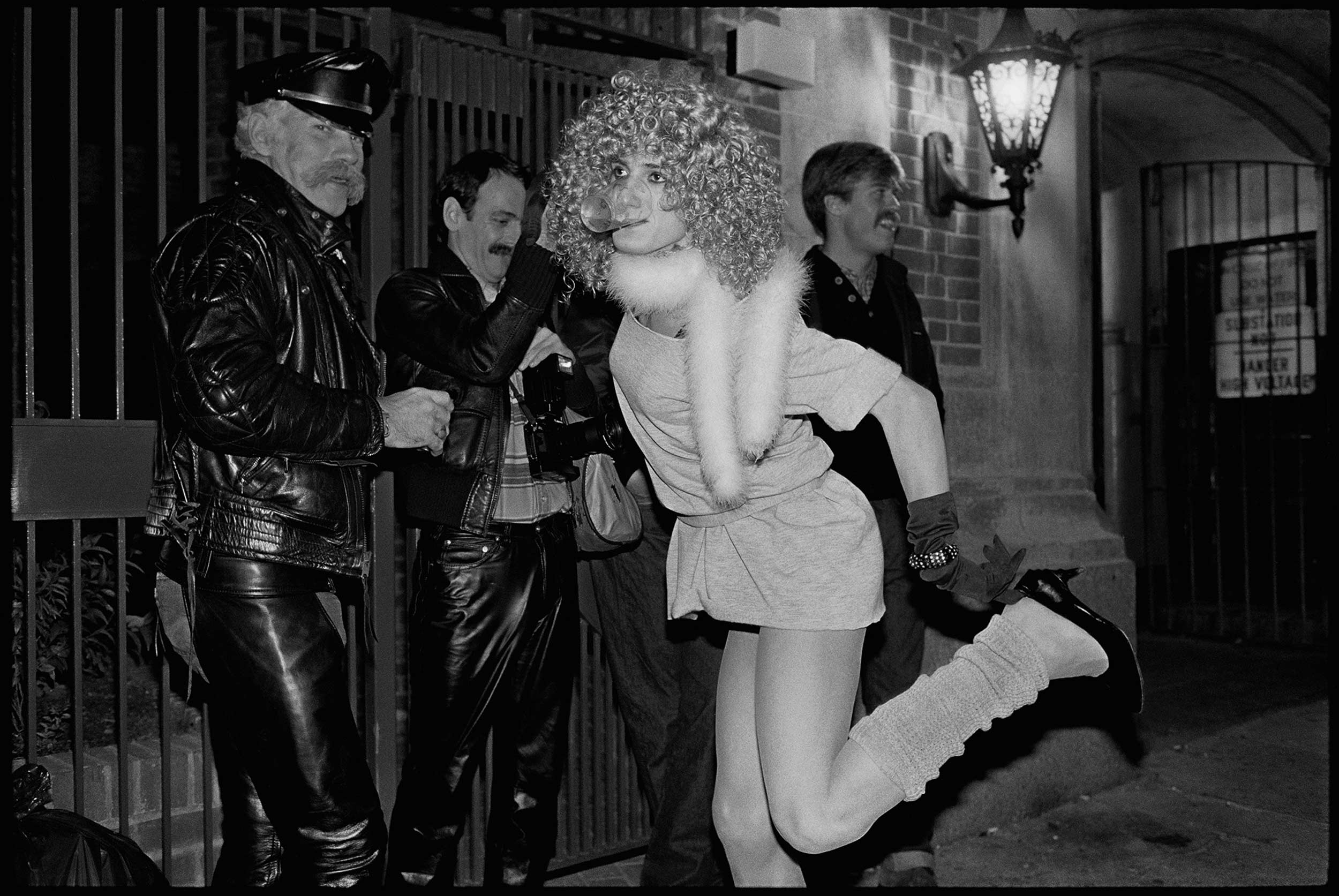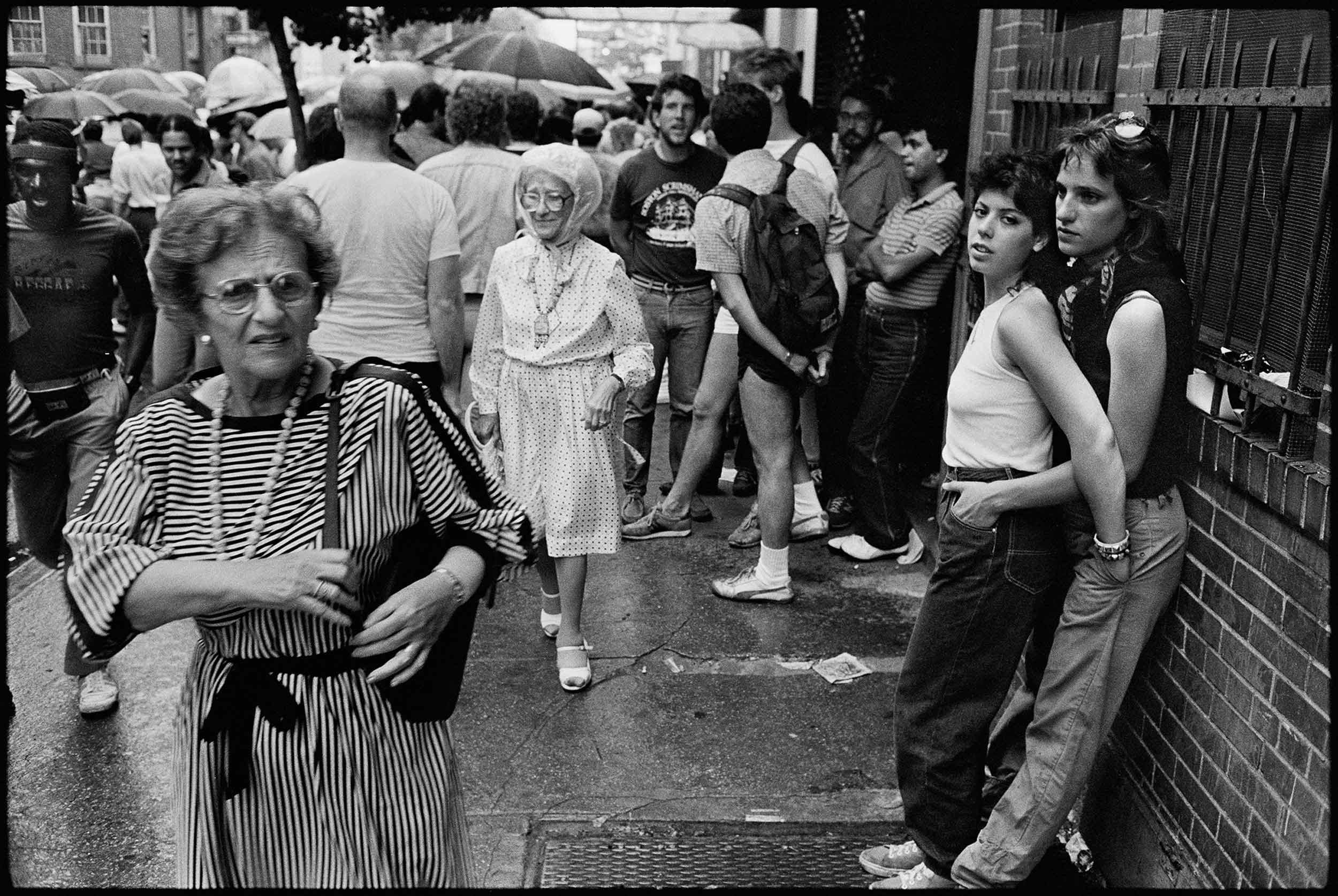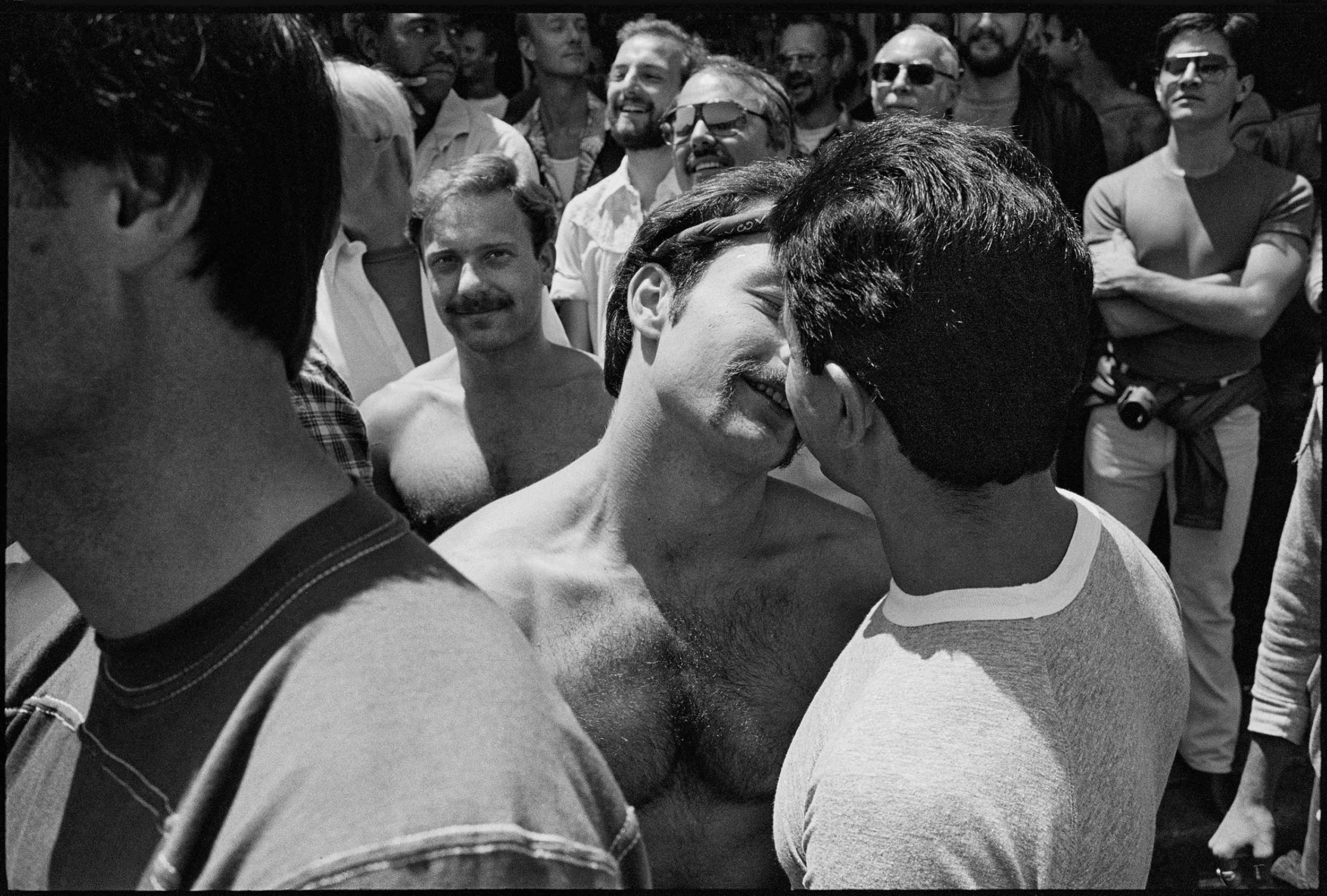Nicholas Blair’s debut photography book offers a vision of Pride on the cusp of AIDS, from the streets of San Francisco and New York
Across the streets of San Francisco and New York, 40-odd years ago, a young Nicholas Blair was photographing queer people: their touches, their gazes, their nascent confidence in publicly displaying their affection. In those post-maiden Pride March and pre-AIDS years, he documented the kinetic and optical joy of gay love. Castro to Christopher, the photographer’s first book, is a portrait of that brief, blissful period in LGBTQ history. Its subjects reach out to caress and to protest; they stare to confront and to surrender. Each gesture and interaction is rendered in handsome black-and-white, with Blair’s shadow as the only visible proof of his presence in the intimate moments captured.
Flipping through the dozens of images compiled in Castro to Christopher, the gaze of queer pedestrians emerges as Blair’s central subject matter. There are queens in polka-dot gowns staring into the camera through fabulous, cartoonish eyelashes; Sisters of Perpetual Indulgence squeezing their eyes in pleasure; rows of butches scowling in the summer sun; flashers loitering on the sidewalk, grinning at one another as they cheekily lift the fabric of their tops.
Blair cites Cartier-Bresson’s authoritative The Decisive Moment as an instructive influence on his work. His images, however, are not only temporally serendipitous; they’re visually kairotic, too. Many of the more remarkable photographs in this portfolio capitalize on the incidental symmetry of shapes. At a sit-in opposite St. Patrick’s Cathedral on Fifth Avenue, Blair captures a protester as he raises his arms in fervent exclamation. His frozen gesture is a perfect echo of Atlas, the bronze god who carries the heavens upon his shoulders, staggering on the sidewalk behind. In another image, a pair of men sporting handlebar mustaches and biker caps pose in front of an advertisement featuring a huge, grinning straight couple. Through Blair’s adroit framing, the men in the foreground appear as leather daddy doppelgängers to their vanilla billboard counterparts. It’s a canted, self-aware, and unapologetically gay American Gothic—trading the pitchfork for leather chaps, and empty stares for contemplative gazes.
“It’s a canted, self-aware, and unapologetically gay American Gothic—trading the pitchfork for leather chaps, and empty stares for contemplative gazes.”
The final series of images in Castro to Christopher documents a quiet moment of queer intimacy. Across five frames, we see the backs of two women as they perch on a pier in Provincetown, Massachusetts: first staring off in different directions, then meeting for a kiss, and finally collapsing into each other’s laps. This anonymous knot of bodies is a tranquil subject to close on, following pages filled with a vivid cast of characters. Beyond the Atlantic’s glassy horizon looms an epidemic that will claim a generation of gay men along with millions of others; decades of insufficient and inept legislative efforts concerning the rights of queer people; and the corporate vampirization of Pride. But in this moment—in these five final frames—the tangle of lovers looking towards the future feels optimistic. The sky is still blank. Our subjects don’t notice us; they look ahead. What comes next remains to be seen.


